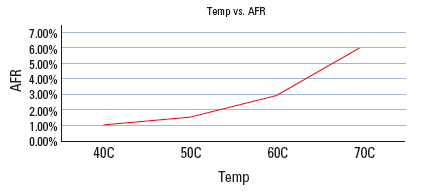
|
|
Keeping it Cool
Now the days of summer are almost here it's worth looking at potential problems with your computer system and digital camera
which may result from the increased temperatures.
Case in point - Monitors
A week or two ago, when the weather started getting hot here in New Jersey, I noticed that my system monitor (A Viewsonic GT 775 17" graphic series CRT) was developing a brown/yellow zone on one side, accompanied by some odd looking vertical straitions. "OK" I thought, "it's old (maybe 6 years?), so it's dying" and I started looking around for a replacement.
However it struck me that I only notice the problem in the afternoon, when the monitor had been on for a few hours and the temperature was getting high, so it occurred to me that maybe it was overheating. Like any good computer tech, my first action was to take a power saw, cut a 4" hole in the top of the monitor and bolt on a large fan to suck the air though it. Not pretty, but pretty effective. The problems went away and have not yet returned.
Monitors are not well cooled. They generally don't have fans and depend on convective cooling - air inside the monitor heats up, rises, and passes out of the top of the cabinet while cool(er) air is drawn in through vents at the bottom. Cheap, quiet, but not very effective. Why no fan? Well, the cynical might say that if monitors get hot, they fail, and if they fail you have to buy a new one, so there's not a lot of incentive to make them last long past the warranty expiration date...
Fans are cheap ($5-$15) so it's not a big investment. You really don't need to chop a hole in your monitor case either (which is just as well as there are very high voltages in there are you really don't want to come in contact with them). Just attach a fan to the top of the monitor which sucks air OUT. Amazon.com carry a bunch of Cooling fans . .
Keeping Cool is S.M.A.R.T.
What's the next most vulnerable component in your system? Well, you need to keep the CPU cool, but CPUs usually have big heat sinks and fans connected directly to them, so they tend to be OK. They're designed to run hot anyway and have no moving parts.
Then there are disk drives. Motors, electronics, moving parts and no active cooling. If they get hot, data errors go up, the disk life goes down and when it goes down it might take all your digital images with it. Not a good thing.
The plot below gives some idea of the effect of temperature on disk life. Don't take it too literally since the test conditions aren't specified, but it does show that going from 40C to 50C to 60C to 70C results in an increasing number of disk failures. Note that 7200 rpm drives generate more heat than 5400 rpm drives and so tend to run hotter. Ideally a drive should run under 40C. If it runs under 50C it's probably still OK. If it hits 60C you have a problem and if it hits 70C you have a big problem.

How do you know how hot your hard drive is? Well that's where S.M.A.R.T. comes in. It stands for
Self-Monitoring, Analysis and Reporting Technology and is incorporated into most current drives. You can get
freeware which will talk to the drive and report back an operating temperature. Try HDD Thermometer for example.
What if you're seeing temperatures over 50C? Well the first thing to do is make sure that your system cooling fans are
all working, that the air intake holes in your PC case are not clogged with dust and fluff and that your PC case is sealed like it should be. If, for example, you run with the cover off it will destroy the airflow pattern that the case designer worked so hard on (you hope) and cooling will not be effective. Air is suposed to be sucked in though the vents in the case, overthe internal components and exhausted by the fan(s). Open the case and that airflow is disrupted.
If all looks OK and your drive temperature is still high, you can also add a hard drive cooler (or two) if you have room. They are cheap ($5 to $25) and effective and can prolong the life of your drive (and your data!). You can see a bunch of Hard drive coolers on Amazon.com. Most systems should not need them, but if you have a case stuffed with cards and drives and that's drawing a lot of power and generating a lot of heat, you may. on Amazon.com. Most systems should not need them, but if you have a case stuffed with cards and drives and that's drawing a lot of power and generating a lot of heat, you may.
Digital Cameras too
The main effect of increased temperatures on digital cameras is increased image noise,
especially noticeable at high ISO settings. There's really not much you can do except to keep your camera out of the direct sun and to turn it off when you aren't using it. Some cameras get noticeably warm in use, and if you can feel the heat through the case, that's not a good sign about internal temperatures.
You're unlikely to see any immediate camera failures due to heat, but you may notice noisy images and you may shorten the camera life if you let it get too hot for too long - though most digital cameras become obsolete long before the electronics fail, which I guess could be thought of as a plus!
© Copyright Bob Atkins All Rights Reserved
www.bobatkins.com
|

